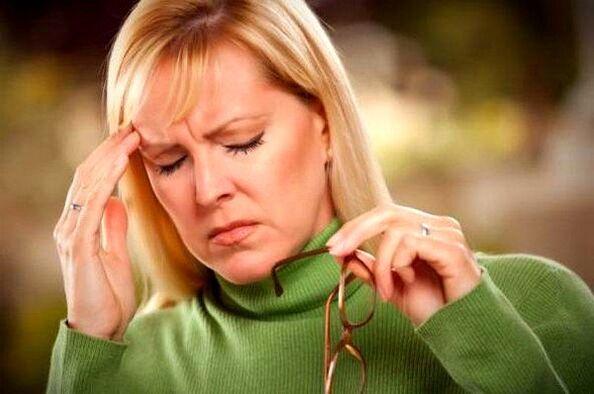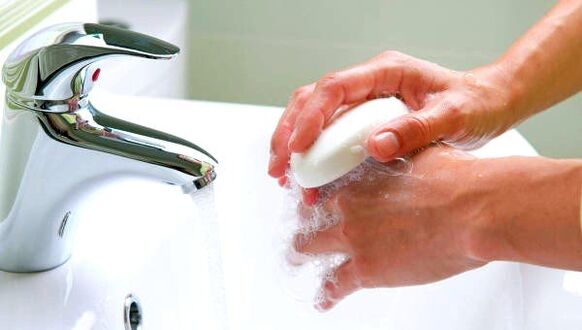Worm infestation is a group of diseases that reveal the presence of parasitic worms in the body.
Worms in humans, the treatment of which requires an integrated approach, cause their owners a lot of unpleasant sensations.Parasitic diseases caused by various helminths (worms) and/or parasitic worms are incredibly widespread among various population groups. So, trichinosis is often detected in people whose activities are related to hunting or animal husbandry, and diphyllobothriasis is a common disease among amateur and professional fishermen.
Attention!Sometimes it is very difficult to identify the symptoms and signs of worms in humans, and treatment may go wrong, since helminthic infestation is very similar to the symptomatic pathology of some diseases of the gastrointestinal tract, with diseases of the liver, gallbladder and other infectious diseases .
Infection methods
How do parasitic arthropods enter the human body? There are several known methods of helminth infection:
- through the surface layer, that is, the terrestrial soil where the parasitic worms deposit their mature eggs;
- through contact with infected domestic or wild animals, birds or aquatic fauna;
- through contaminated food that has not undergone sufficient heat treatment;
- a large number of helminth eggs end up in open water bodies, which is also a source of infection;
- In some cases, the bite of insects that sting or suck blood is a source of infection.

However, the most common method of infection is human-to-human infection.
Parasite diversity
Today, there are more than 250 different parasitic worms that are harmful to human health. The frequency of infection depends on social conditions and climatic zones. We will determine the degree of danger that certain types of worms pose to humans and whose treatment requires immediate therapeutic intervention. Let's look at the most common and dangerous types of parasitic worms in the human body:
- The pinworm is a type of free-living, parasitic nematode whose favorite habitat is the human intestine. Parasitizing the small intestine or cecum, these worms reach the ileum, where they mate. After fertilization of the female, the male ceases his vital activity, and the pregnant female, filled with eggs, continues her journey through the rectum, crawling out through the lower opening of the digestive tract. After laying eggs in the perianal folds of the anus, the moth dies. This movement throughout the body lasts about a month. Traveling through the gastrointestinal tract has its consequences. The appearance of worms in humans, the symptoms and treatment of which are determined by a disease called enterobiasis, is the most common type of helminthic infection.
- Roundworms are dioecious round helminths, the total length of which can reach 40 cm. A sexually mature female produces more than 200, 000 eggs, whose preferred location is the gastrointestinal tract, in particular the small intestine. Roundworms provoke signs of worms in humans, the symptoms and treatment of which are defined as ascariasis - one of the types of helminth infestation. The free circulation of the parasitic worm causes irritation of the small intestine, which affects its patency. By parasitizing internal organs, roundworms not only affect the gastrointestinal tract, but are also unexpected visitors to the respiratory and/or genitourinary system. Cases of roundworm penetration into the frontal sinus, nasolacrimal canal and external passage of the hearing aid have been recorded.
- Trichinella is one of the varieties of protostome parasitic round worms, the larval stage of which begins in the elastic tissues of the muscular system, after which mature individuals are sent to the small intestine. Infection with this type of roundworm leads to a fatal disease - trichinosis. Worms in human muscles, symptoms, treatment and diagnosis are determined by facial swelling, rash, myalgia and blood eosinophilia. A more severe degree of clinical pathology is characterized by damage to internal organs and the central nervous system. It is very difficult to identify Trichinella in the human body. All symptoms occur without complications. Only after penetration into the central nervous system is it possible to determine the symptoms of worms in an adult - treatment in this case is aimed at restoring a neurological disorder, for example, ataxia or paralysis of the respiratory tract.
- Intestinal Giardia is a genus of flagellated protozoan parasites that cause invasion of protozoa in the human body with primary damage to the small intestine and are the causative agent of giardiasis. By adhering to the walls of the digestive organ, the parasites feed on decay products. The favorite dish of mature lamblia is flour and sweet foods. Coming out with feces in the form of spores, the parasites enter the external environment. Often, during a biochemical laboratory examination during the treatment of worms in an adult, Giardia cysts are found that enter the body through chlorinated tap water.
- The provocateur of another type of helminthic infestation is the whipworm, which affects the organs of the gastrointestinal system, causing trichocephalosis. A fertilized female parasitic worm releases up to 10, 000 eggs in one day. Whipworm larval development occurs without an intermediate host. The worms entering the body damage the mucous membrane of the colon, thereby causing an acute disorder. In some cases, whipworm is a causative agent of inflammation of the appendix of the cecum, that is, appendicitis. The prolonged presence of a parasitic worm can cause anemia.



Identifying signs and symptoms of infection
When worms and parasites are identified in humans, treatment is determined by symptomatic signs and data from biochemical laboratory tests. Characteristic symptomatic signs of helminthic infestation:
- pale skin;
- general weakness of the body;
- dizziness;
- itching in the anus;
- functional disorder of the intestines;
- allergic reaction;
- phase change in body temperature.

The toxic effects on the body lead to a decrease in immunity, resulting in the worsening of inflammatory processes in chronic diseases.
Attention!A characteristic of the long stay of parasitic worms is a sharp decrease in the body weight of the helminth carrier.
Home test for helminth detection
With the help of simple tests, which should be performed by an infectious disease specialist or parasitologist, you can check for signs of a possible helminth infestation. Count the number of questions answered yes.

The risk of infection exists with 10 "yes" answers, and more than 15 is already the probability of developing helminthiasis:
- there is some rash on the body which was not there before;
- if you are bothered by frequent bloating, flatulence, diarrhea or constipation;
- there is constant itching in the anal passage;
- Do you often experience headaches or dizziness during the day?
- if there are sudden urges of nausea or gag reflex;
- Is there intermittent sleep for no apparent reason?
- whether the lymph nodes are enlarged;
- if swelling appeared in the legs;
- You are worried about constant tiredness and fatigue;
- Does the mucous membrane of the eyes have a yellowish tint?
- Do you feel a constant bitterness in your mouth?
- There are allergic manifestations – cough, rhinitis, asthma;
- Do you feel constant pain or heaviness in your stomach?
- there is an unmotivated change in temperature;
- whether there are preschool children in the family;
- there are pets or birds;
- if the pain occurs in the muscles and joints without the influence of physical activity;
- People around you complain about your snoring or grinding your teeth at night;
- there is total indifference to food;
- Do you often forget to process raw fruits and vegetables?

If, based on the results of home tests, there is a possibility of infection, contact a specialist.
Lung damage
Attention!Worms in human lungs are considered a very dangerous and rare disease - in these cases, symptoms, treatment and signs must be determined at an early stage of the infection, which is quite difficult to do.
The clinical symptoms of the disease are very similar to those of bronchopulmonary pathology, which manifests itself in general symptoms:
- attacks of nausea and/or vomiting;
- difficult breathing;
- wheezing in the lungs;
- dyspnea;
- increased body temperature;
- productive cough and so on.
The causative agents of lung lesions are various types of tapeworms, pork tapeworms and roundworms.

Helminthic infestation in the organs of vision
Itching, irritation, increased sensitivity and allergic-type burning in the sensory organ can be caused by worms in a person's eyes; Treating this helminthic infestation is a very laborious process. It requires certain skills from a specialist, since the parasitic worm constantly migrates throughout the visual organ. Symptoms can be determined by constant irritation of the eyelids, which resembles chronic inflammation in blepharitis. How worms appear in a person after treatment of an eye helminth infestation can be seen in the photo.
How to get rid of helminths: treatment methods
Today, infectious disease specialists and parasitologists have at their disposal more than 20 drugs and anthelmintic agents, the treatment of which can remove worms from humans. Treatment with broad or narrow spectrum anthelmintics allows for an effective fight against parasites, as long as the diagnosis is correctly established and laboratory tests for the helminthic pathogen are carried out. When choosing the therapeutic regimen, it is necessary to take into account the patient's age, sex and weight criteria, since anthelmintic pharmacological treatments are highly toxic. Synthetic dosage forms have replaced traditional folk remedies - garlic, chenopodium oil, fern and so on. After identifying the symptoms, treating worms in humans with tablets involves completely cleansing the body from helminthic infections.
The most effective dosage forms are broad-spectrum drugs that can resist most intestinal and extraintestinal helminths. Treatment of worms in humans with tablets is conventionally divided into pharmacological combinations of antitrematodose, anticestodose and antinematodose effects. Here is a list of the most popular medications that help eliminate various types of helminth infections:
- Broad-spectrum synthetic anthelmintic from the benzimidazole group, widely used in the treatment of trichuriasis, enterobiasis and other manifestations of intestinal infections caused by nematodes. Active absorption of the drug into systemic circulation allows the depletion of glycogen reserves in the tissue structure of parasitic worms. The duration of treatment and dosage are determined by an infectious disease specialist or parasitologist.
- A drug from the imidazothiazole group is a pharmaceutical form with anthelmintic properties that has an active immunostimulating effect. Pharmacological treatment paralyzes the muscular structure of the parasite, inhibits its fumarate reductase and weakens the bioenergetic activity of the helminths. The drug is prescribed as an anthelmintic when the following diagnoses are established: trichostrongyloidiasis, ascariasis, toxocariasis, necatoriasis, etc.
- Pharmacological medicine from the anthelmintic group of benzimidazoles. The action of the drug is aimed at blocking and paralyzing the nerve endings of helminthic parasites. Muscle paralysis does not allow worms to attach to the intestinal walls and feed on decay products. The emergence of parasitic worms occurs in a natural physiological way. The pharmaceutical form is available free of charge in pharmacies. However, it is advisable to consult a doctor before use.
Help from traditional medicine
A helminthic infestation is also a psychological blow that an adult tries to hide from others for various reasons. Alternative medicine will help remove worms from humans using folk remedies. To combat helminthic parasites, various herbs are used, which are no less effective than medicines:
- onion;
- dandelion;
- burdock;
- nettle;
- clove;
- tansy;
- garlic;
- absinthe, etc.
An equally common way to treat helminthic infestations is to consume raw pumpkin seeds. However, for complete treatment, it is necessary to consume 150-200 g of pumpkin seeds daily at a time, provided that the duration of home therapy is 3-4 weeks.

The most effective traditional medicine recipes for removing worms from the body:
- A half-liter jar is filled to the middle with chopped onion and filled with vodka or an alcohol solution. After a day of exposure, the medicine is filtered and used for its intended purpose. Take 2 tablespoons 4 times a day for a week.
- The crushed pomegranate peel is placed in a glass of diluted vodka or alcohol. The medicine is taken daily, one tablespoon every 3-4 hours.
- A decoction of green walnut shells is very useful. The product, crushed in a mortar, is poured into alcohol and infused for 2-3 days until a pronounced brown color is formed. Take a spoonful one hour before meals.
- Boil two chopped garlic cloves in 200 ml of milk until completely dissolved. The medicine is taken in a single dose before meals.
- A teaspoon of wormwood is brewed in 250 ml of boiling water and, after cooling, the healing remedy is ready for use. The strained liquid should be taken one hour before meals, 3 times a day.

A very effective preventive remedy is freshly squeezed carrot juice, which is recommended to drink 200 ml on an empty stomach for two weeks.
Helminth infestation prevention
Antiparasitic prevention of worms consists in observing sanitary and hygienic standards, which not only adults, but also children must strictly comply with:
- It is necessary to wash your hands with soap before eating, after walking and coming into contact with animals;
- food must undergo heat treatment before consumption;
- Street kebabs and seafood vendors should be avoided.

Also, be sure to carry out daily ventilation of the living space and do not forget about wet cleaning.
Take care of yourself and always be healthy!
























